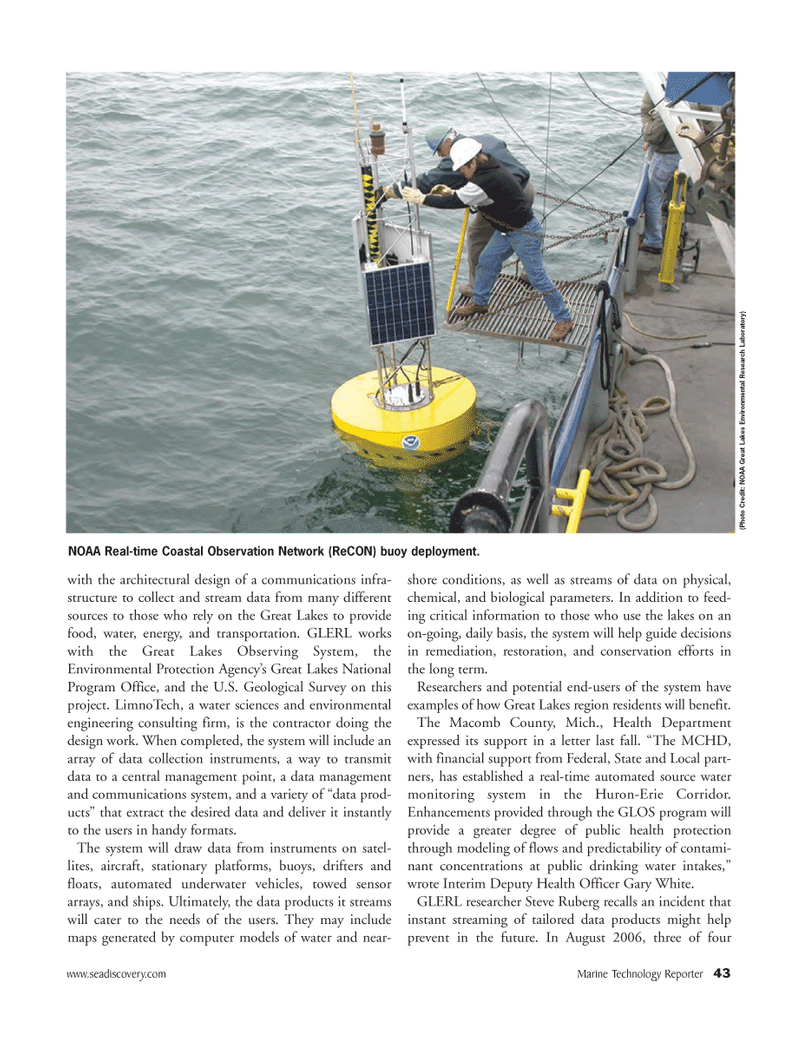
Page 43: of Marine Technology Magazine (November 2011)
FreshWater Monitoring and Sensors
Read this page in Pdf, Flash or Html5 edition of November 2011 Marine Technology Magazine
www.seadiscovery.com Marine Technology Reporter 43NOAA Real-time Coastal Observation Network (ReCON) buoy deployment. (Photo Credit: NOAA Great Lakes Environmental Research Laboratory) with the architectural design of a communications infra- structure to collect and stream data from many different sources to those who rely on the Great Lakes to provide food, water, energy, and transportation. GLERL works with the Great Lakes Observing System, the Environmental Protection Agency?s Great Lakes National Program Office, and the U.S. Geological Survey on this project. LimnoTech, a water sciences and environmental engineering consulting firm, is the contractor doing thedesign work. When completed, the system will include an array of data collection instruments, a way to transmit data to a central management point, a data managementand communications system, and a variety of ?data prod- ucts? that extract the desired data and deliver it instantly to the users in handy formats.The system will draw data from instruments on satel- lites, aircraft, stationary platforms, buoys, drifters and floats, automated underwater vehicles, towed sensor arrays, and ships. Ultimately, the data products it streams will cater to the needs of the users. They may include maps generated by computer models of water and near- shore conditions, as well as streams of data on physical, chemical, and biological parameters. In addition to feed- ing critical information to those who use the lakes on anon-going, daily basis, the system will help guide decisionsin remediation, restoration, and conservation efforts in the long term.Researchers and potential end-users of the system have examples of how Great Lakes region residents will benefit. The Macomb County, Mich., Health Department expressed its support in a letter last fall. ?The MCHD, with financial support from Federal, State and Local part- ners, has established a real-time automated source water monitoring system in the Huron-Erie Corridor. Enhancements provided through the GLOS program will provide a greater degree of public health protection through modeling of flows and predictability of contami- nant concentrations at public drinking water intakes,?wrote Interim Deputy Health Officer Gary White. GLERL researcher Steve Ruberg recalls an incident that instant streaming of tailored data products might help prevent in the future. In August 2006, three of four MTR#9 (34-49):MTR Layouts 11/29/2011 9:44 AM Page 43

 42
42

 44
44
